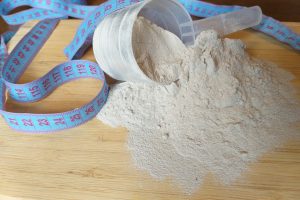Did you know that vitamin D isn’t just one vitamin? It consists of a group of fat-soluble vitamins that have a manifold physiological effect.
The most important forms of vitamin D include:
- ergocalciferol (vitamin D2), naturally occurs in plants/yeast
- cholecalciferol (vitamin D3), naturally occurs in animals
Both vitamin D deficiency and hypervitaminosis are dangerous for health. The micronutrient’s excess causes the release of calcium from bones, increasing its levels in the blood. Calcium is picked up by soft tissues and causes their calcareous degeneration, e.g. kidney stones. Consuming higher doses of the vitamin can have toxic effects.
The need for vitamin D depends on the amount of the vitamin that is made in the skin though sunlight contact, the ratio of calcium to phosphorus in the everyday diet, and the extent to which these nutrients are obtained from food.
The main types of products rich in vitamin D that provide it in your everyday diet are fats, meat, and meat-derived products.
In many countries it is obligatory to add vitamin D to some products in order to prevent deficiencies. For instance, in the US the artificially fortified products include cereal, milk, yoghurts, orange juice and margarine. In EU these are cereal and margarine.
Important role in the human body:
– affects bone metabolism significantly. It is very important for forming bones and teeth in human development
– can help fight teeth decay through the immune system because it activates defense lectins (e.g. cathelicidins)
– has immunity boosting and indirectly antibacterial properties
– activates genes that encode antibacterial peptides (with natural antibiotic properties)
– inhibits cancer cell growth, influences apoptosis and angiogenesis
– can lower the risk of catching the flu
– stimulates the liver’s self-healing properties
– affects the regulation of calcium-phosphorus balance, is essential for proper calcium and phosphorus absorption in the small intestine
– helps maintain constant calcium and phosphorus levels in the serum, preventing bone demineralization
Examples of vitamin D amounts in food
It’s worth remembering that food provides a small amount of the vitamin. A significant amount is released in the skin through contact with UV light.
Vitamin D occurs in food in small quantities and mainly in animal based products. Plant based products, excepting those artificially fortified with it, usually don’t contain the vitamin (except for fungi).
The highest amounts of vitamin D are found in fish and margarines that are obligatorily enriched with the vitamin.
| Product name | Vitamin D amount / 100g |
| eggs | 1,70 µg |
| pork liver | 1,1 µg |
| fresh eel | 30 µg |
| cod | 1 µg |
| herring in salt | 9,2 µg |
| herring in oil | 20,2 µg |
| pickled herring | 12 µg |
| herring | 19 µg |
| salmon | 13 µg |
| canned fish (tuna, sardines) | 5 µg |
| mackerel (cooked/roasted) | 3,8 µg |
| salmon (cooked/roasted) | 13,5 µg |
| margarines | 5,00–7,50 µg |
| smoke-dried salmon | 8,4 µg |
| egg yolk | 1,35 µg |
| hard cheese | 0,45 µg |
| cow milk | 0,025 µg |















Add Comment